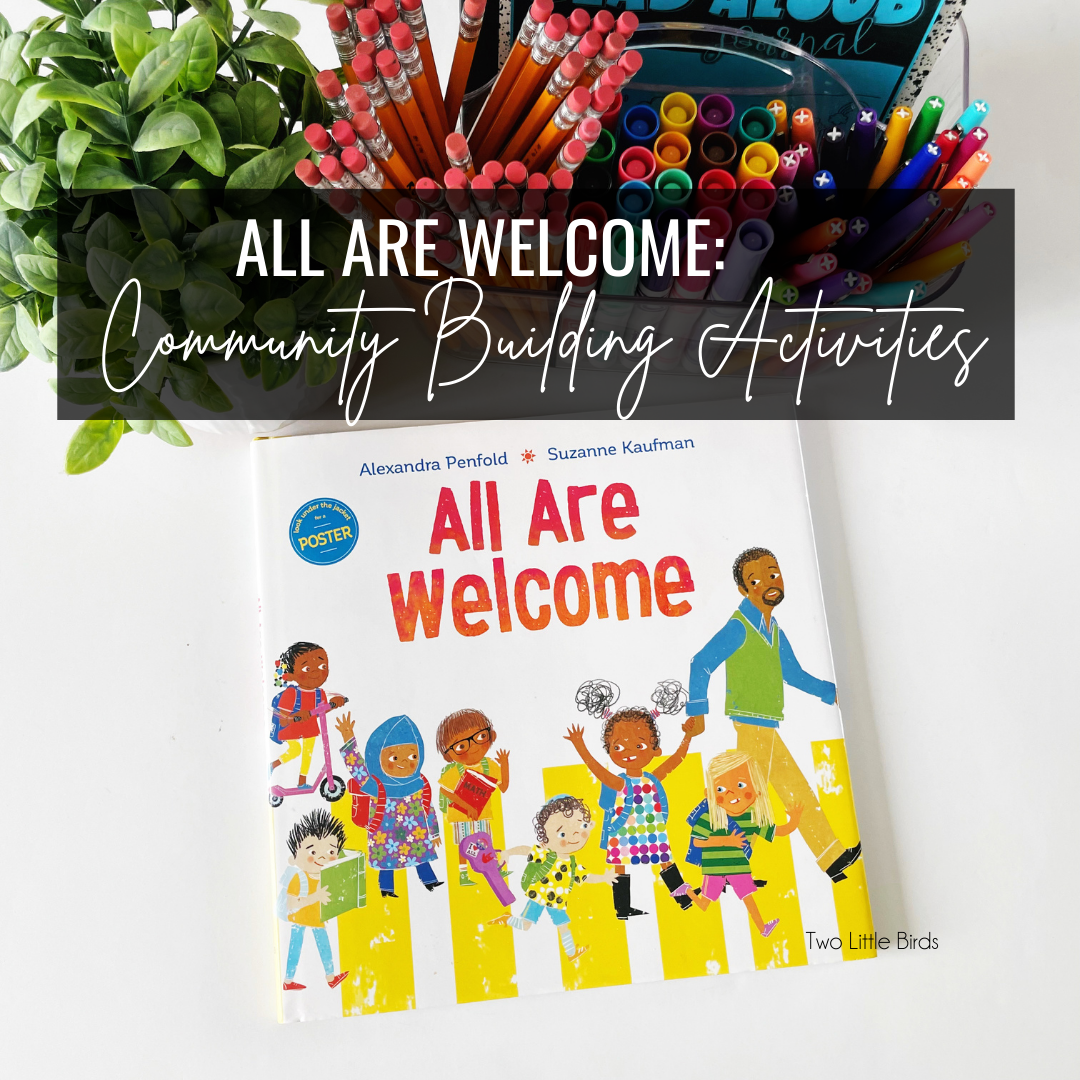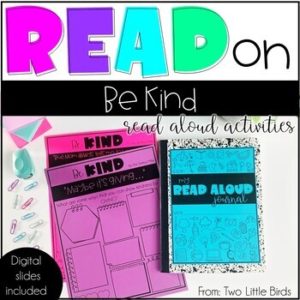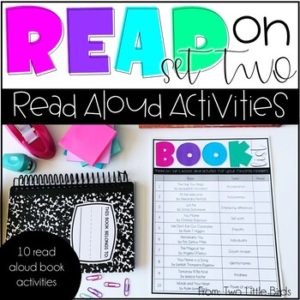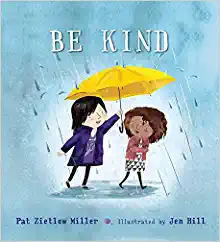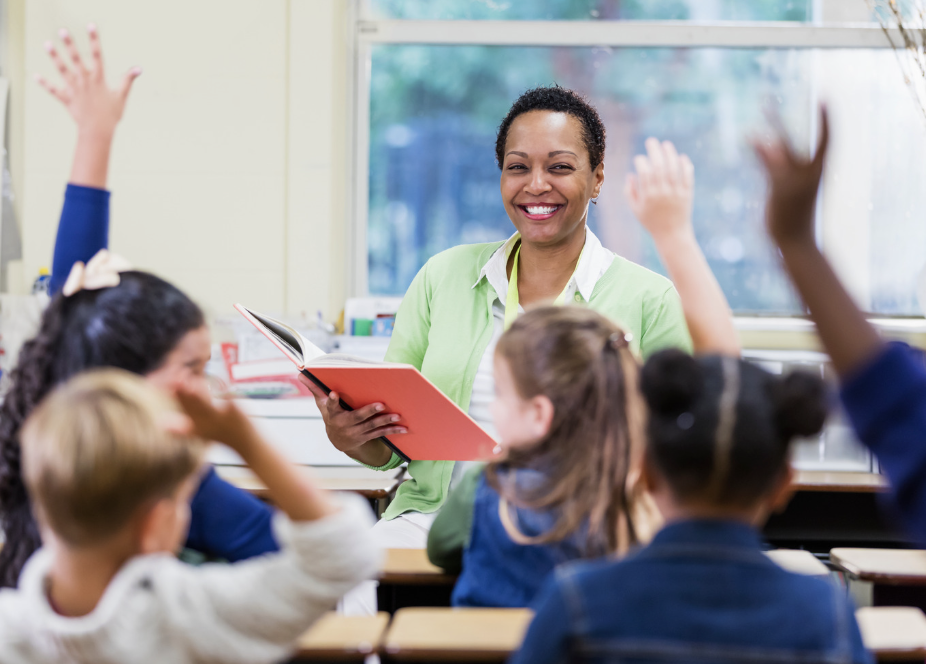“Be Kind” by Pat Zietlow Miller is a relatable story about kindness that allows students to imagine real-life situations and look at things from different perspectives. Students can take away actionable steps to show kindness and understanding to others. The story shows that kindness does not always come easy and can even feel scary sometimes. It is a great book to open up a discussion about being kind and identifying simple and practical ways to show kindness to those around us.

The book has a wonderful message that allows you to open up conversations with your students about how being kind does not always come easy and how kindness can sometimes be misunderstood too. Kindness can happen in different ways and will look different in different situations. Students can discuss how to be aware of people’s feelings and think about how to react. And while being kind can sometimes feel difficult, acts of kindness may seem small, but they can make a big difference; students will know that they can make a difference.
Skills to teach with “Be Kind”:
- Characters
- Theme
- Inferences
- Setting
- Connections
- Retell
- Point of view
- Problem/solution
5 Favorite “Be Kind” Activities
“Be Kind” is such a great book to read and discuss the power of kindness. From asking a new classmate to play to standing up to a bully, this thoughtful story explores what children can do to be kind, and how each act of kindness can make a difference. It is easy to talk about kindness, but it is complicated when in real-life situations to figure out how to be kind. This book is written thoughtfully and with an introspective look at what it truly means to be kind to others and you and your students will appreciate the concrete examples the author gives to inspire kindness in others.

Here are some of my favorite activities to do after reading the book.
1. Thinking about other's feelings…
The story begins with a misunderstanding between Tanisha and the narrator. When Tanisha spills juice, the narrator wants to help and tells her it is her favorite color. She feels she is being kind, but Tanisha does not take it that way. This offers a great opportunity to discuss how the narrator believed she was being kind but it was misunderstood by Tanisha, who was upset at the time.
Students can reflect on how Tanisha felt in that moment and why the narrator's comment was upsetting to her rather than reassuring, as she intended it to be. This situation really allows students to think about how they would feel, act, and what they could say. The relatable accident allows students to connect to both of the characters.
2. Kindness through giving…
The narrator begins to look at different ways that we can be kind, giving specific examples that students can relate to. Kindness can be giving and many times when students think of “giving,” they think of gifts. But, giving doesn't have to be a gift, it can be time, company, hand-me-downs, and more.
Students can brainstorm ways that they can give to others. Thinking beyond gifts allows students to truly tap into what those that they love may really need.
3. What does it mean to be kind?

We hear and say “kindness” so much, but this book opens the discussion to really let students think about what it really means to be kind. You can give students the opportunity to put it into their own words. And when everyone takes the time to think about what kindness really means, they'll be able to see how it is different even among their classmates. We all have our own meaning of kindness and what we do to show kindness may look different too.
4. Simple things that mean a lot…
One of the most powerful parts of the book is the realization that small acts of kindness truly mean so much. When we do small acts of kindness, they can turn into big things. And something that may seem small to us, may not seem that way to others. Simple things can make a big difference.

Students can make a list of some of the simple things that others have done for them that have meant a lot. When they think of small acts of kindness, they can be reminded that it does not have to be a HUGE act to make an impact.
5. Big or Small…
There are so many amazing things to learn from this beautiful book, but actionable ideas and ways to be kind to others truly make it a special read-aloud.
Students can brainstorm ways, big or small, that they can spread kindness TODAY.
“Be Kind” is such a special book to share with your students. Your students will relate to the situations presented throughout the book and find ways that they can make a difference in the lives of people around them. They will not only enjoy the book but learn some important lessons too.
I hope you and your students love it!
You can grab a free one-page guide for using this book in your classroom here:
You can find more of my favorite read-aloud books HERE.
And read more about why I think reading aloud is so important HERE.
You might like this blog post about self-love.
Check out all of my favorite books with activities and free read-aloud guides HERE.
You might also like to read more about these books:
Shop this post:
You can find the book, “Be Kind” here:
This is an affiliate link and I receive a small commission when you purchase with this link.









